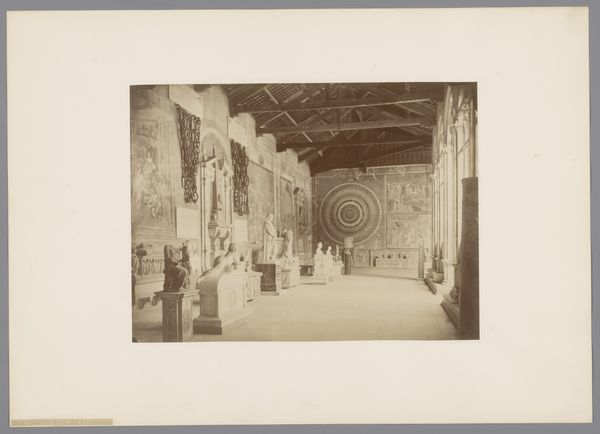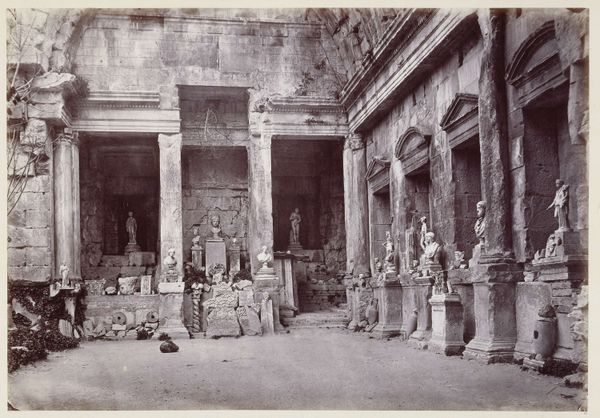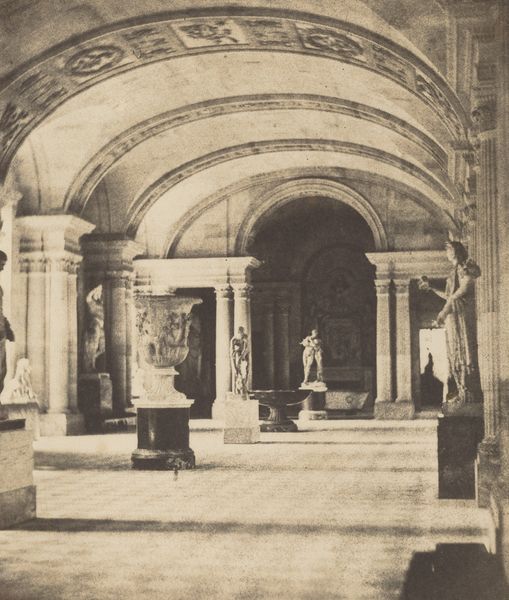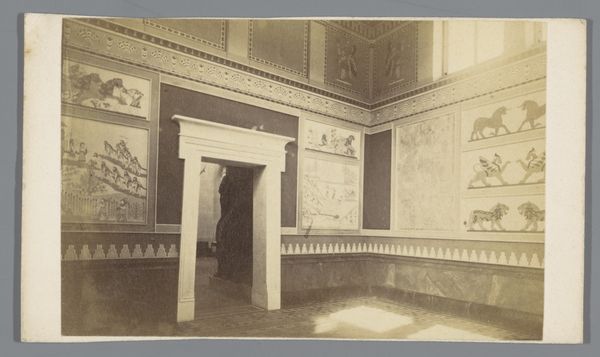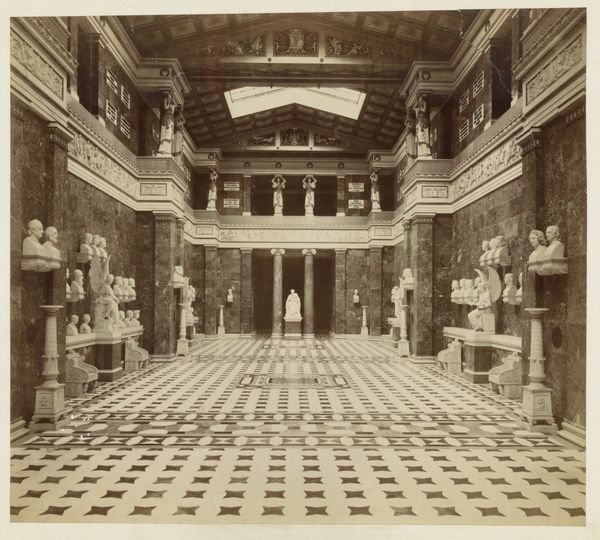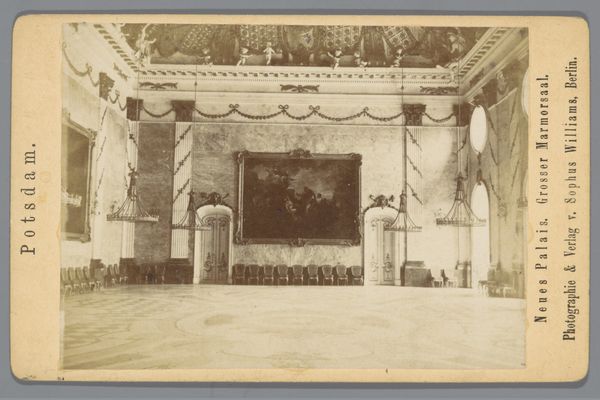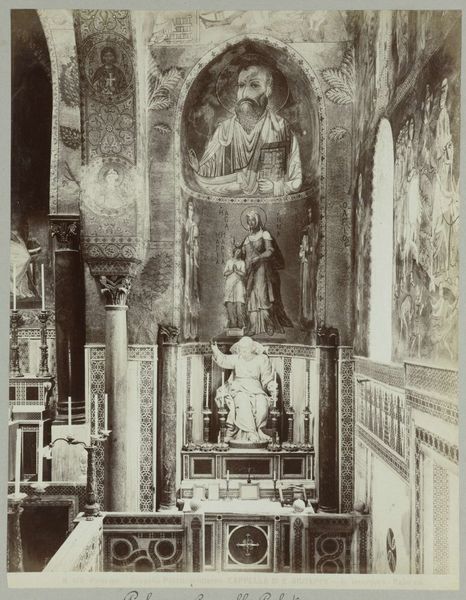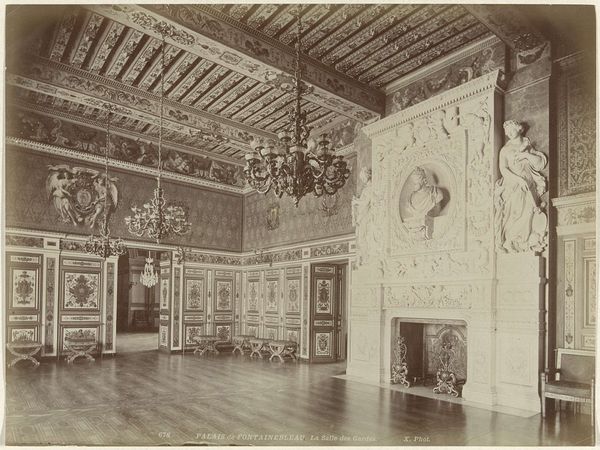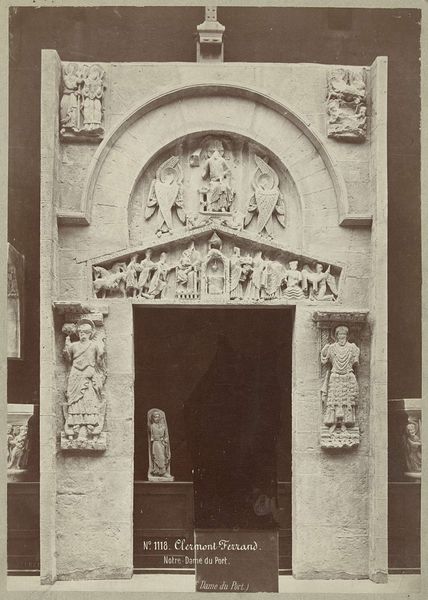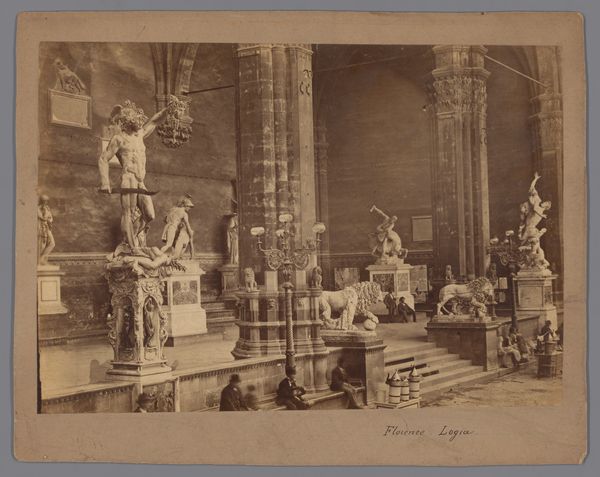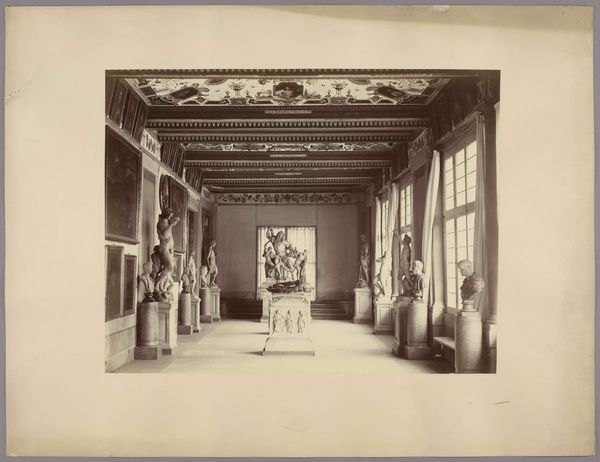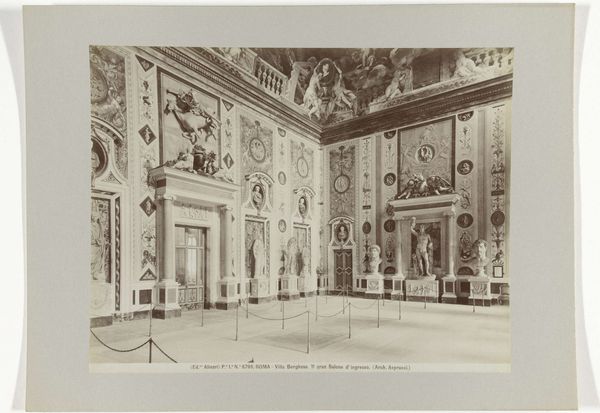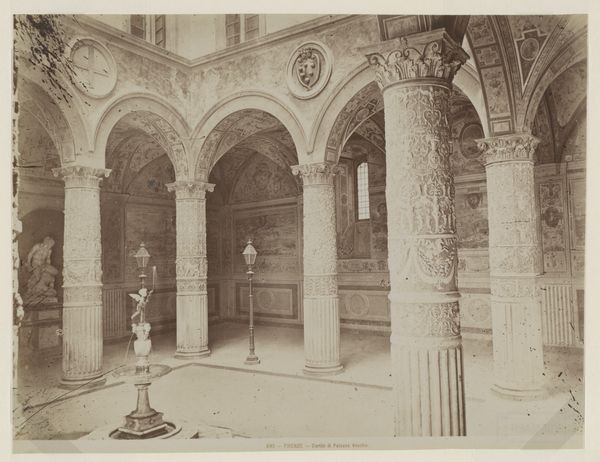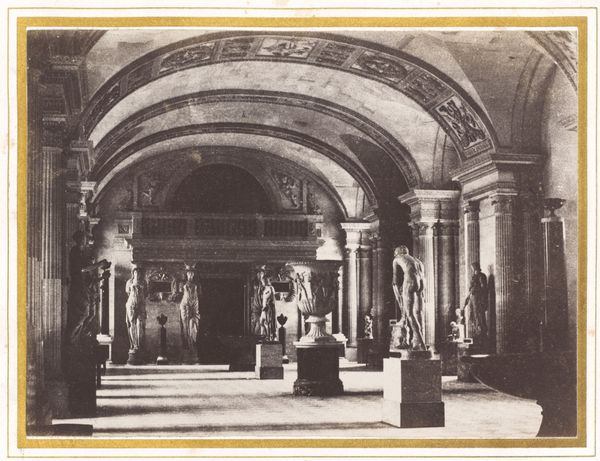
Dimensions: image: 41.4 × 57.8 cm (16 5/16 × 22 3/4 in.) mount: 58 × 75 cm (22 13/16 × 29 1/2 in.)
Copyright: National Gallery of Art: CC0 1.0
Curator: My first impression is this photo whispers rather than shouts, a study in sepia and subdued light. It evokes a quiet, contemplative mood. What do you make of it? Editor: We're looking at "Pisa: Corridore del Camposanto," a gelatin-silver print from around 1870, captured by the Alinari Family. It showcases the interior of the Camposanto Monumentale in Pisa, Italy. What draws me in is the image's capacity for remembrance. It uses the artistic qualities of memory and ruin and invites contemplation on the historical meanings inherent in ancient architecture and statues. Curator: The image's formal style strikes me. I mean, the geometry of it all—the perfect circle on the wall opposite the entrance versus the classical architecture and tomb-like sculptures arranged symmetrically on the left. How do you see the visual language playing out? Editor: Yes, there is tension between circularity and the rigid symmetry of death within. In iconography, circles often represent totality, unity, and even the divine. Placed on a mausoleum wall, it makes me think about transcendence and cyclical patterns of life after death—also suggesting psychological completion when confronted by such a sacred and historical building. Curator: It makes me wonder about that period in history—1870. Gelatin silver prints were just emerging, a technological step beyond earlier photography. Here, the photograph serves not only as a document of architecture and art but also offers viewers the sense of time's passage by capturing this interior space with an emerging technique from the past. Editor: Right, photography was evolving beyond simple reproduction, offering this more emotional, atmospheric quality. We sense the layers of time. Note how people are positioned almost as static elements that could also represent other statues. They offer scale but perhaps a symbolic association with timeless artistic legacy. Curator: Yes, there’s a sense of being transported, even though it is so carefully staged. Thank you for guiding me through such a layered picture; now I understand that photography can become so historical it functions sculpturally. Editor: My pleasure. The convergence of historical setting and artistic interpretation can remind us that our human narratives intertwine and enrich one another. I wonder how the passage of time will reshape how viewers internalize its contents.
Comments
No comments
Be the first to comment and join the conversation on the ultimate creative platform.
